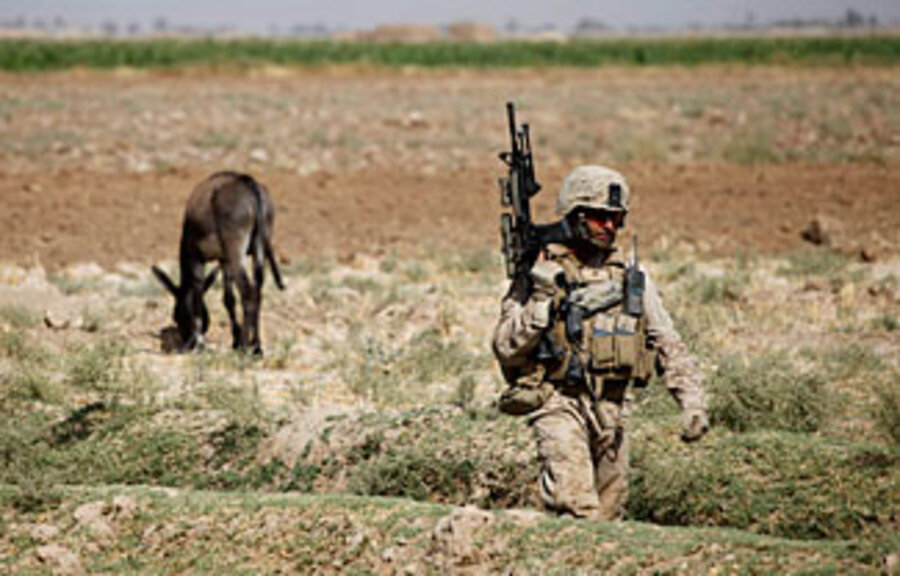Why does McChrystal need more troops for Afghanistan?
| Washington
Deploying more troops to Afghanistan will not win the war, but not sending them will surely lose it, says the top US commander there in a much-anticipated assessment of the eight-year-old military mission.
An unclassified copy of the 66-page assessment was leaked to The Washington Post Sunday, confirming what many experts had expected: Gen. Stanley McChrystal will ask for more troops. But what will more troops accomplish?
McChrystal's apparent answer is that the US must mount a proper counterinsurgency effort. In the bumper-sticker parlance of counterinsurgency, coalition forces must clear, hold, and build. To do that, the US and its allies must protect the population, weed out the insurgency that attempts to grow among it, and train an indigenous security force to ultimately take over the mission.
Afghanistan has long been an "under-resourced" mission, McChrystal says. This prevents coalition forces from being able to "hold" an area after clearing it. That creates a vacuum the insurgency can once again fill.
More troops would also be necessary if the US is to follow McChrystal's recommendation to double the number of Afghan security forces from a current goal of about 200,000 police, Army, and other forces to about 400,000. That, ultimately, is the US exit strategy of transferring security responsibility to the Afghans, much in the same way as in Iraq.
A significant number of more troops would put Afghanistan on par with the "surge" of forces in Iraq in 2007. Advocates of such a surge note that Afghanistan is larger than Iraq – both by area and population. Moreover, its ethnic composition, tribal structure, and geography is far more complex than Iraq's, making a similar commitment crucial.
By counterinsurgency doctrine, the country could use as many as 400,000 troops, according to a previous American commander. Even if McChrystal asked for and received about 40,000 troops, the Afghanistan mission would still fall under the 150,000 that marked the Iraq surge. There are currently about 100,000 allied troops from 42 nations in Afghanistan, 68,000 of which are from the US.
McChrystal is said to be considering a range of additional troops, from as few as 10,000 to as many as 40,000. That request will be sent to the White House in the coming weeks.
In his assessment, McChrystal said that this is a "decisive" period of time for the war, as Afghans grow weary of military operations they cannot see have made a tangible difference on their daily lives.
"Victory is within our grasp, provides that we recommit ourselves based on lessons learned and provided that we fulfill the requirements needed to make success inevitable," McChrystal wrote.
The assessment comes amid sharper speculation, particularly from President Obama's own party, that the war in Afghanistan may no longer be worth more American blood and treasure. Many leading Democrats would like to see a timetable for withdrawal and a renewed US focus on training Afghan security forces, not combat operations.
On the other hand, the military is now clearly believes that more forces are necessary. Adm. Mike Mullen, chairman of the Joint Chiefs of Staff, told a Senate hearing last week that he and other top military officers believe winning there will "probably" mean more troops.
Mr. Obama meanwhile has cast doubts on an Afghan surge, however, saying Sunday that only when he is convinced that the resources can match the strategy will he be confident to deepen US involvement there.
"How does this advance America's national security interests, how does it make sure that Al Qaeda and its extremist allies cannot attack the United States homeland, our allies, our troops who are based in Europe?" Obama said on NBC's "Meet the Press."





